The Kgalagadi isn’t as busy as Kruger, but the main camps get their fair share of visitors. If you’re looking for utter seclusion, you have to venture further afield. These are the campsites where you can unwind in peace and quiet. By Emile Wessels
The problem with the South African side of the Kgalagadi is that it has become so popular that it is very difficult to secure a booking – especially at the very popular unfenced wilderness camps. Along with the increased popularity, previously unheard-of problems like traffic jams at sightings have arisen. Still, this is nowhere as bad as in the Kruger National Park and for the most part tourists seem to be better behaved – not monopolising the best positions, cutting off others, etc.
But if you are looking for seclusion and few other tourists, what are you to do?
Wilderness camps
Your first options – if you can secure a booking – are the SANParks wilderness camps at Grootkolk and Gharagab on the South African side. These camps of log and canvas cabins house a maximum of eight tourists each. They are far enough from the major camps that for a large part of the day you can be ‘almost’ alone.
However, if you want to sleep in your own tent with only the wild for company, consider the following options.
Campsites in the Nossob River Valley
Camping in the Nossob River Valley is at the unfenced Botswana campsites of Rooiputs and Polentswa. At Rooiputs the stands each feature a shade shelter, shower enclosure, longdrop and sink, and (usually) has water on tap. Lion, leopard, cheetah and hyena are often seen in the area. The three stands at Polentswa feature a shade shelter, shower enclosure and longdrop (NO water). The nearby waterholes of Polentswa and Kousant are usually very productive.
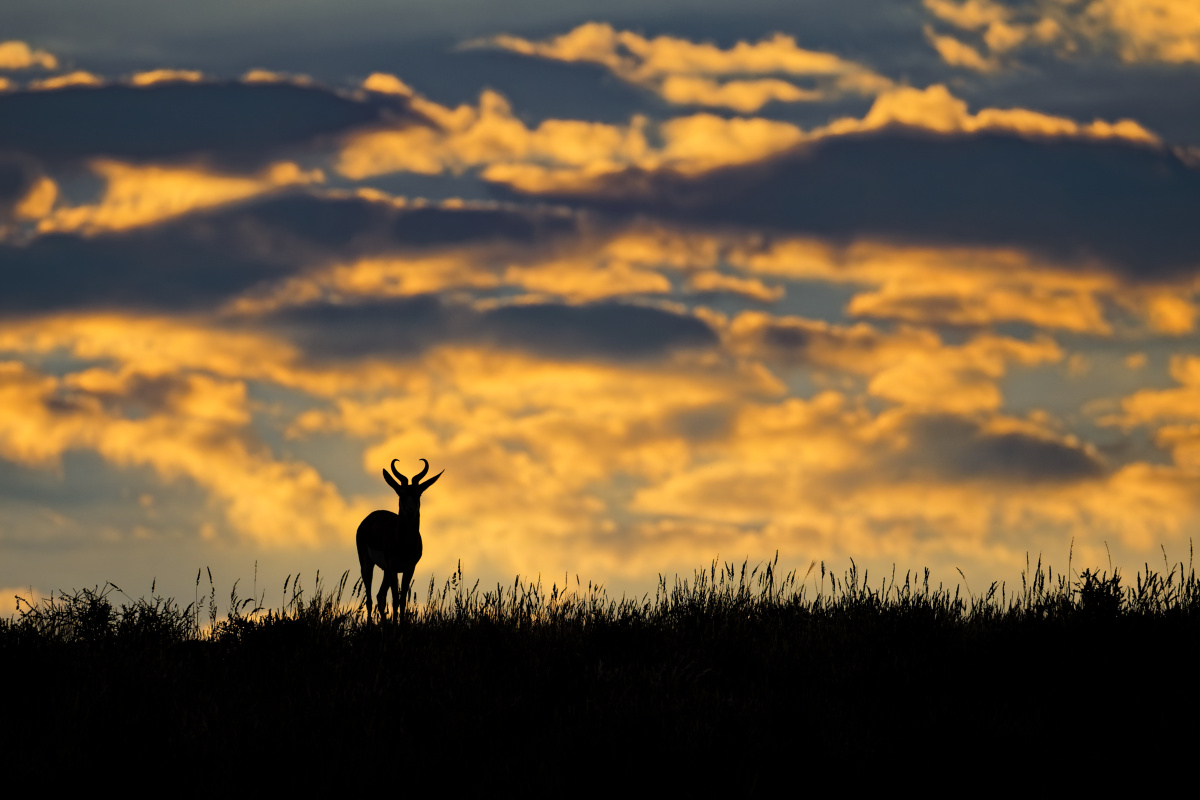
At both Rooiputs and Polentswa the stands are nicely spread out so you will not feel as if you are camping on top of your neighbour. However, Rooiputs is close to Twee Rivieren, so the downside is you will not have much time before encountering large numbers of tourists on their morning game drive. In this regard Polentswa is nicer, because you will have about a two-hour window before the first tourists staying at Nossob are likely to arrive in the area. This is not to be sneezed at, as in my experience the best sightings of the day occur in the first two hours after gates open. Both these campsites have become very popular so securing a booking is more of a challenge than it used to be.
Camping in Mabuasehube
It is still somewhat easier to secure a booking in the Mabuasehube area. The Mpayathutlwa stands (two proper stands and an undeveloped ‘overflow’ stand) and the three Mabuasehube stands are booked via Inter-Tourism Group.
Water at both the Mpayathutlwa campsites and the waterhole seems to be quite reliable, and game and predators are usually abundant. The last time we camped at Mpayathutlwa we spotted a pride of lions on the pan early in the morning. My wife uttered the prophetic words: “If they continue like that, they are going to come and visit us.” Indeed, about 30 mins later 10 lions showed up in our camp where they stayed for most of the day. The lions in the area seem to have become quite habituated to people, which should not be a problem as long as you exercise some common sense. It would really be a shame if an avoidable incident leads to “nanny state rules” being imposed. The ability to camp unfenced in areas frequented by potentially dangerous animals, with no official supervision is a real privilege. For some of us, it is one of the main attractions of camping in Botswana.
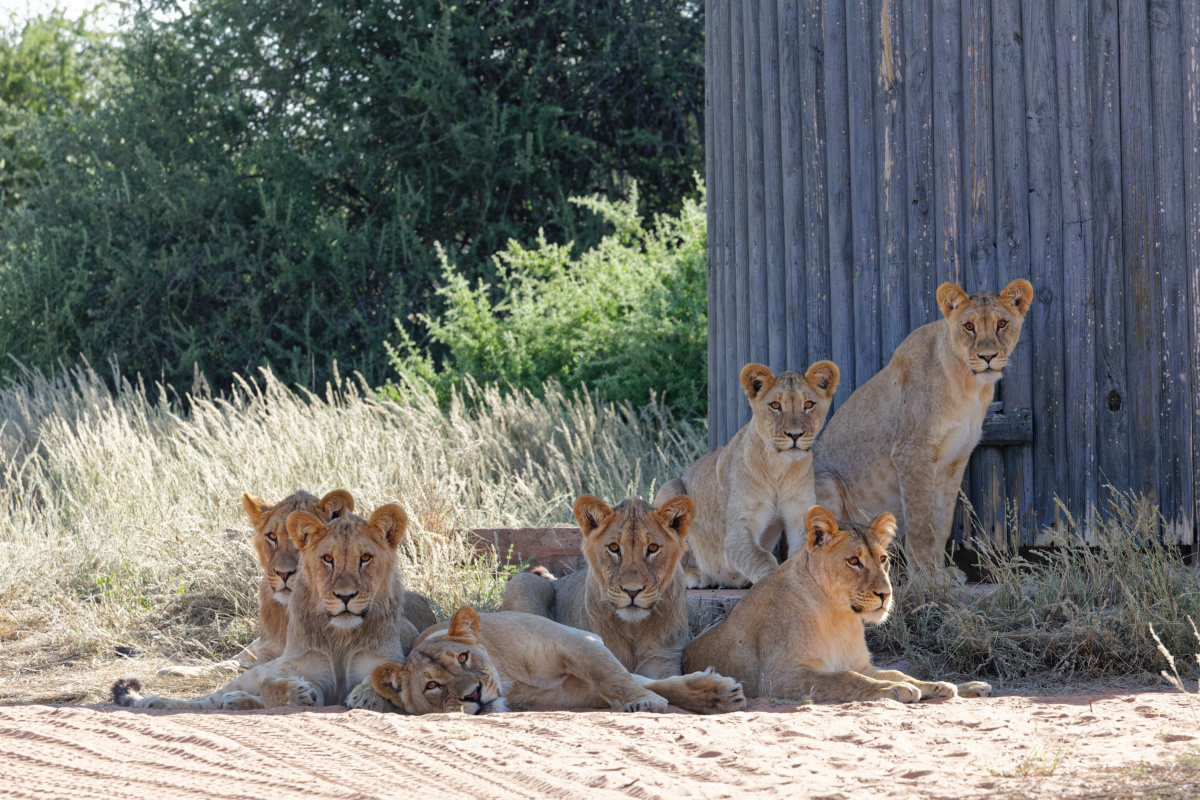
Also read: How to act around wild animals
Lion behaviour at Mabuasehube
In the spirit of avoiding incidents, here are a few observations:
- Predators are using the run-off from the showers as a source of water. During their visit, the lions used the run-off water and during the evening we also spotted a leopard drinking at the shower.
- Young lions are curious, and their interests are much wider than one would expect. Before going on a game drive, we packed away everything we thought would be of interest to them, only to find on our return that their interest extends to firewood, firelighters, doormats (mmm, chewy and yummy), etc.
- Keep tent doors closed. Animals see a tent as a solid structure and will treat it as such, but if the door is open, they may investigate. And this can happen suddenly and quickly as the guys from Moving Pictures Africa can testify.
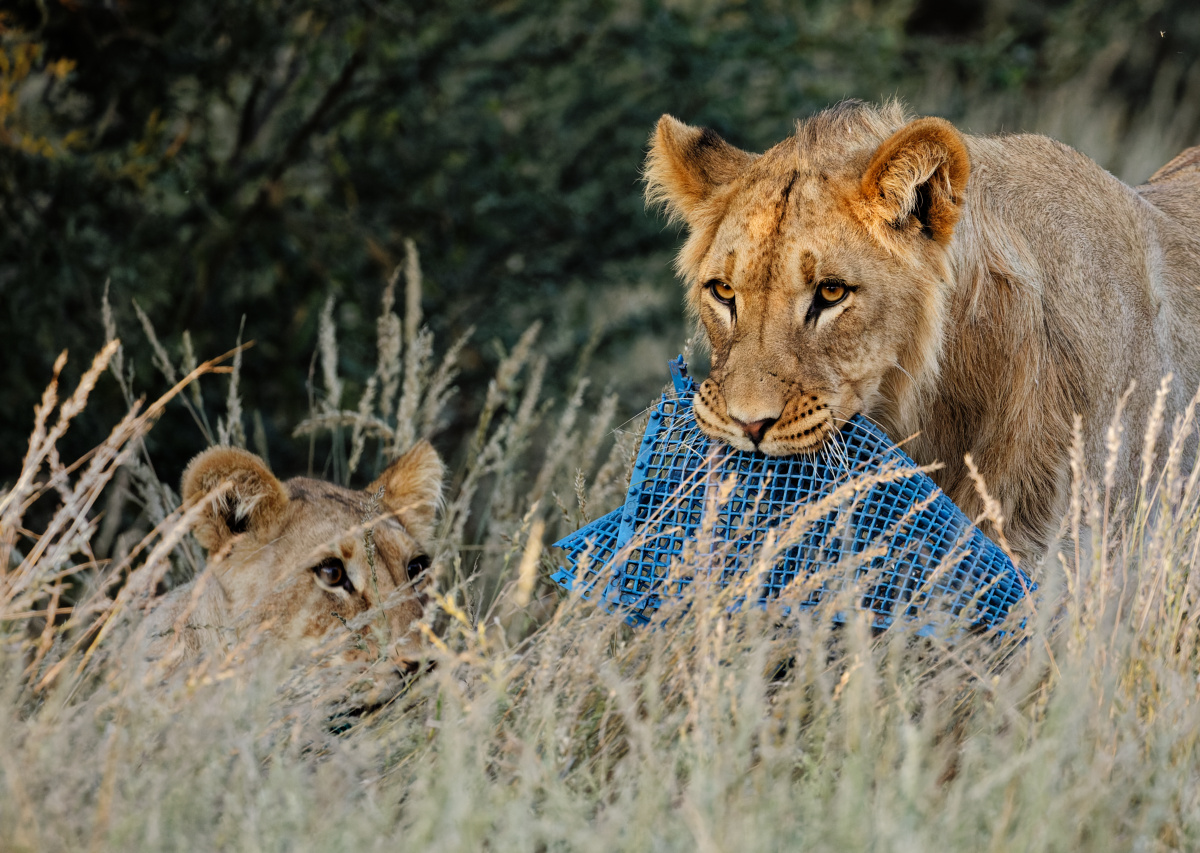
The other campsites in the Mabuasehube area are still managed by and booked through Botswana’s Department of Wildlife and National Parks (DWNP). These sites are significantly cheaper than those managed by Inter Tourism. The only sites that have water are Lesholoago 2 and Monamodi. However, do not rely on that water actually being available.
4×4 wilderness trails
People craving even more seclusion can book either the 2-day Mosomane wilderness trail (between Mabua and Nossob, also known as the Mabuasehube 4×4 Wilderness Trail) or the 3-day Polentswa wilderness trail (starting at the Polentswa campsite and looping back to the Nossob River Valley). We drove both during April 2021 and at the time the Mosomane trail was in a very good condition – better than the regular two-way access route between Nossob and the Mabua area.
Only one group at a time is allowed on the trails. It really is an amazing feeling to know there are no humans closer than 90km to your overnight spot. DWNP requires that you should be at least two vehicles.
Highlights
The Polentswa Trail was the hidden gem we discovered in 2021. We found several plus points:
- Very few people seem to book this trail, so securing a spot is easy;
- The trail passes through varied scenery;
- In 2021, the area was game rich and birdlife was amazing;
- The (undeveloped) campsite situated at Sesatswe Pan, the first stopover after Polentswa campsite, was lovely: scenic, shady, roomy, abundant bird and animal life. It was so nice, in fact, that members of our group wanted to stay longer than the allocated one night.
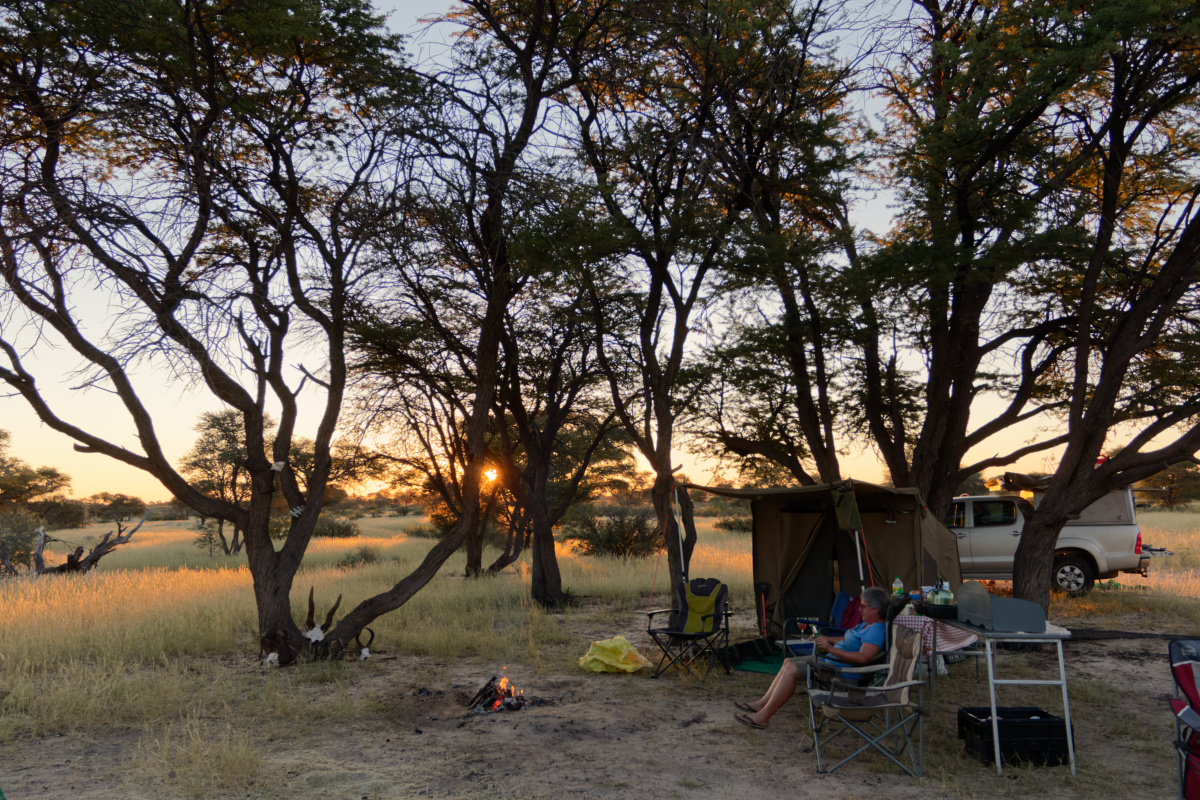
Drawbacks
On the downside, the fact that the trail is not that popular means it is a bit overgrown in places. Especially on the afternoon of day 2, your vehicle may be scratched. Also, after good rains you have to stop often to check for grass and seeds around your exhaust (which can cause a fire) and to remove seeds from the radiator (which somehow managed to accumulate despite using a seed net). The latter is a seasonal problem. If you want to avoid the more overgrown bits, you can cut short the trail at Kaa by diverting to the Kaa access road – but you will then not be able to overnight at Lang Rambuka. All in all, it is a mystery why this trail is not more popular.
Camping in the Kaa area
The last alternative for seclusion is to use any of the campsites in the Kaa area of the park, like Swartpan, Thupapedi and Gnus Gnus. You should have no problem securing a booking at one of these sites. After 20 years of going to Kgalagadi we decided to explore this area in March 2022. Read more in the Kgalagadi and Khutse trip report.
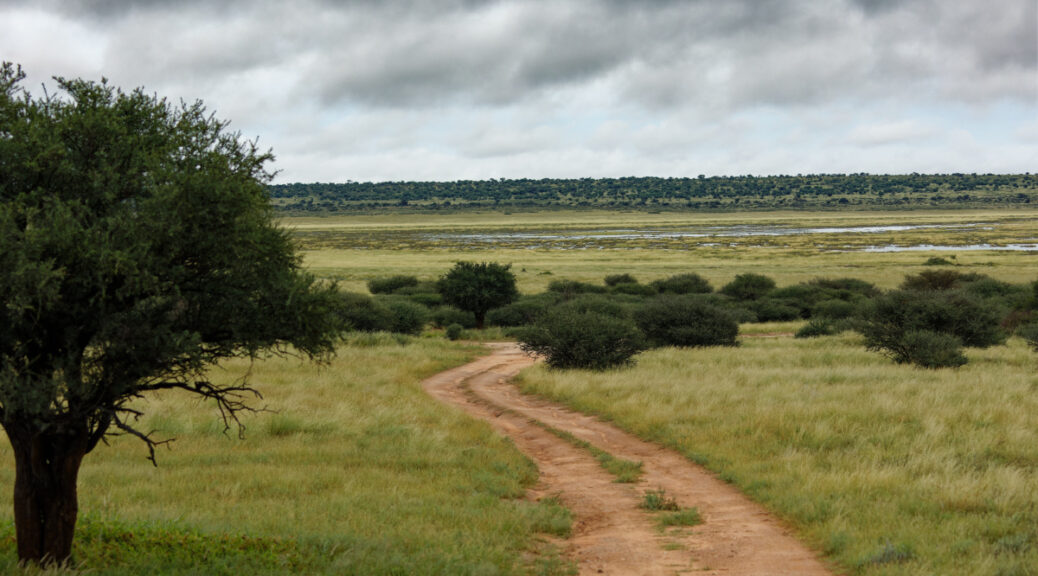

Great feedback on recent experiences in Mabua and Kgalagadi, thank you. Recent client visits have reported to us (Ultimate Routes) that Polentswa is under construction after the fire damage. The repair work should be done by end of May 2022 – A-frames & shower/toilet enclosures are being upgraded). Lesho’s water pump is currently broken and Mabuashebue management mentioned it will not be fixed soon. Lets hope they are speedy with repairs.